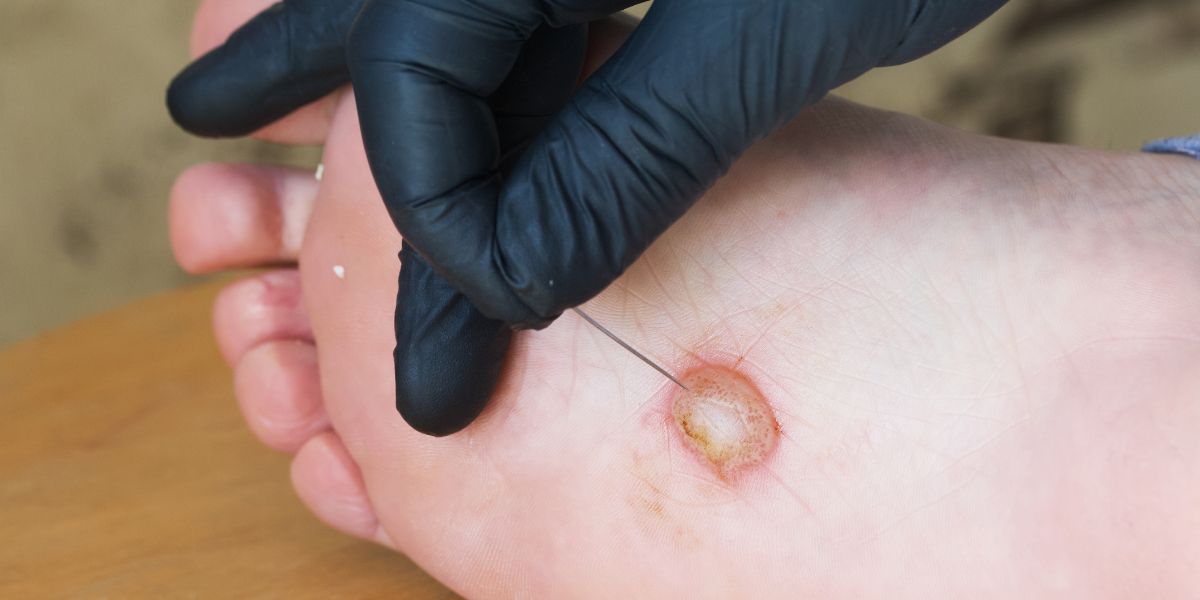More than 25 percent (25 percent) of American seniors are affected by diabetes, a chronic condition that is responsible for a wide range of complication. In the range of 10 to 15% of diabetics suffer from leg or foot ulcers. If they are not treated, the wounds can become so severe that diabetic foot amputations might be necessary. Foot ulcers account to more than 80 percent amputations.
Management of diabetes is a complex issue that requires a multifaceted plan that goes beyond the control of glucose. That’s why daily foot care becomes a key element in preventing the risk of complications related to diabetes.

Understanding the Landscape
Diabetes and its complications create an intricate landscape to navigate. The adversity of foot and leg ulcers among diabetic patients underscores the necessity for proactive treatment. With these stark numbers, it is apparent that the best approach to stop amputations from happening is to foster a greater understanding.
The Amputation Conundrum
Amputation is a major possibility for those with diabetes. It’s more than an occurrence. It affects people personally. The journey from a minor foot ulcer to the possibility of diabetic foot amputation is an incredibly painful experience, highlighting the necessity of preventive steps.
Daily Foot Care: A Protective Shield against Amputation
The foundation of diabetes amputation prevention lies in daily foot care. This isn’t only about maintaining hygiene, but an extremely thorough method for identifying and solving potential issues prior to they become serious. Each step of this daily routine is strategic to fight the amputations caused by diabetes.
Vascular specialists: their roles
Although vascular specialists don’t directly deal with diabetes their expertise plays a pivotal role in reducing the complications caused by the disease. To alleviate discomfort in the legs and speed up wound healing, creating optimal blood flow is an essential element of treatment. This collaboration approach is focused on one thing to lower the risk of amputations due to diabetes.
Amputation Prevention: Strategies
A mix of vigilance knowledge and assistance from a professional is required to navigate the labyrinthine world of amputations related to diabetes. It is crucial for those with diabetes to take a proactive attitude. Regular check-ups with healthcare providers, including vascular specialists, can aid in early detection and treatment.
Understanding the Triggers: Leg Ulcers, and Beyond
Leg ulcers are frequently the first sign of more serious problems. They require attention and knowledge. Understanding the triggers that cause leg ulcers can be crucial. Whether it’s poor circulation, neuropathy, or a combination of causes, identifying the root causes allows for targeted intervention as well as individualized care.
Education as a means of empowerment
It is crucial to inform patients with diabetes about the dangers of diabetes and how they can avoid them. Both within the healthcare setting as well as within the general public as a whole, educational programs can bridge the gap from awareness to actions. Understanding the consequences of seemingly innocuous injuries can help prompt prompt responses and may even avoid the need for diabetic foot Amputation.
The battles of the private, the triumphs of the collective
Amputations related to diabetes isn’t just an individual fight, it’s a community victory. Joining support groups via your healthcare provider or the local community can be an excellent means to exchange experiences and gain knowledge, as well as learn techniques for dealing with the situation. The emotional strain of facing amputation risks is immense, and a sense in which you’re part of a larger community can be a source of comfort and strength.
In the end, the trek through leg ulcers, diabetes and the ever-present danger of an amputation are multifaceted. The daily foot care is the initial step to protect yourself. Vascular experts’ experience can be an invaluable asset to mitigate problems. Patients with diabetes who are cognizant, adopt preventive measures, as in fostering a system of support, will be able to traverse the treacherous terrain with a sense of hope and resiliency decreasing the risk of having to be amputation.
